Battleship "Emperor Alexander II" and its atypical fate
This ship became the first-born of the 20-year program for strengthening the Russian adopted on May 1882, 20 fleetaccording to which it was proposed to build 16 battleships in the Baltic. Six months after the adoption of the program, the MTK considered the choice of the prototype of the first battleship “for the Baltic Sea”, which was supposed to be equipped with less powerful artillery compared to the designed Black Sea due to the limited displacement. The most suitable prototypes, according to the ITC, were the German battleship Zaksei (displacement of 7400 tons, six 260 mm guns) and the Danish Helgoland (5370 tons, one 305 and four 260 mm), launched respectively in 1877 and 1878.
The displacement of the designed Russian squadron battleship was determined in 7500 t, the average draft was no more than 6 m, the speed was not less than 14 knots, the coal supply was for six days of full speed, the artillery armament was one 305-mm in the forward part with the greatest angle "And four 229-mm guns, in the corners of the booked casemate with the possibility of firing two at the bow, two at the stern. Booking - iron-plating slabs with the greatest thickness in the middle part of the 356 board mm; The main gauge barbet and the casemate decided to protect 254 with 305-mm plates, the deck above the casemate with 38,1-mm sheets, and outside it with two-layer 75-mm armor. When drafting sketched drawings, the armor belt at the waterline was extended to the extremities in accordance with the order of the manager of the Marine Ministry, Admiral I.A. Shestakova. Artillery noticeably increased, even to the detriment of the draft (it increased to 7 m); instead of one, two 305-mm long-range 30-caliber guns, which were then designed, which were intended to be placed on sinking machines inside a pear-shaped barbet; eight 152-mm guns were added on the battery deck. The ammunition was supposed to make up for every 305-mm 85 cannon, and for 229-millimeter-125 shells. In the final form, the reservation looked like this: a belt of width 2,6 m half (1,5 m) was under water; the belt on the waterline was covered with sheets of mild steel in two layers (total thickness 63,5 mm); the lining of the armor was served by larch beams (254 mm), placed under the thickest plates.
For firing at close distances while lowering the guns, the upper deck to the bow and stern had some gentleness. Floodability provided ten transverse and one longitudinal waterproof bulkhead. The body was sheathed with sheet steel from 9 to 12,7 mm. The displacement of the battleship increased to 8634 t, of which 2935 t (34%) accounted for the hull with underwater wooden and copper casings, the armor 2474 t (29%), the machine 247 t (14,4%), and the artillery 650 t (7,5% ), a luggage team - 72 t (0,8%), provisions with water - 84 t (0,9%), reserves and mine equipment - 300 t (3,5%), coal - 872 t (10%). The design speed increased to 15 knots was ensured by two compound steam engines with a total power of 8000 l. with. First, the frigate car "Vladimir Monomakh" was taken as a model, and then the armored cruiser "Admiral Nakhimov". According to preliminary calculations, 872 tons of coal should have been enough for 4,5 days of full speed (1620 miles), and with half of the boilers operating - nine (2800 miles); additional storage facilities were planned for another 500 t with the expectation of longer voyages in the ocean, however, the draft increased to 7,3 m. In addition, the brig was equipped with a sailing rig - a spar of two iron masts with sails of 2265 square. m, further reduced to 1560.
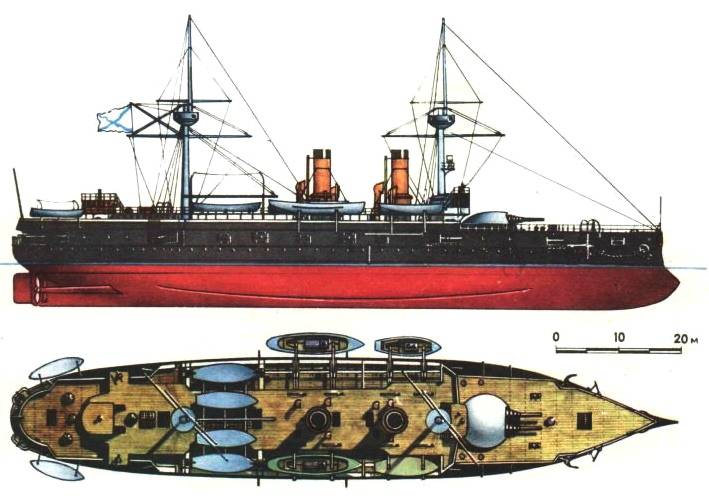
The final drawings and specification of the ship MTK approved 24 August 1883. At the same time, distribution of orders between domestic plants for the rental of steel for the hull, the construction of new workshops began, and in September the construction of a wooden slipway in the New Admiralty in St. Petersburg, where the battleship was supposed to be built with state funds. In mid-November, they began assembling the hull directly on the stocks.
It is interesting to note the attitude of the battleship builder Lieutenant Colonel N.A. Subbotin to the campaign to “save” funds in the construction of ships that began in the Maritime Ministry. Offering to order very expensive tick bars in England, he wrote that armadillos were built for durable service, and the builder is obliged to make all the constructive elements, down to the smallest, "out of materials in the best way ... less repair will make much more savings for the treasury afterwards than temporary savings from cheaper material during construction. "The entire 1884 of the year was spent on building the hull; work slowed down in the winter was resumed in the spring. For the hull brought in April to residential (armored) decks Both the steering and frame shtevnya ordered Putilov plant and Izhorskaya -. Armor plate and vertical plates of mild steel for booking deck Baltic plant began manufacturing major mechanisms.
29 April 1885 of the ITC was reviewed by N.A. Subbotin, the third option for reinforcement of armaments, which provided for the replacement of four 229-mm with two 305-mm implements in the barbet aft installation. Against this, a member of the ITC, Lieutenant-General F.V. Pestich, who believed that such rearmament would lead to a “slowdown in the speed of fire”; in his opinion, these weapons are suitable only against a small number of existing battleships, and the absence of nasal 229-mm guns will significantly weaken the force of the nasal salvo, which is so important during a “ram attack”. For the main number of armored battleships built in 1865-1880, with 114-254 mm side armor (as opposed to which the first Baltic battleship was created), 229-mm guns were considered to be very effective. Refusing, at the insistence of F. V. Pestich, changes in armament, MTC found it expedient in order to save weight to make the barbet protection of 305-mm guns not round, but replacing machines with non-lowering ones. The saved 140 ts were used to good effect - on the armor covers of casemates 229-mm guns (152-mm traverse and 75-m side plates), to increase the thickness of the outer side to 50-mm guns to protect against small caliber guns.
15 July 1885, the battleship under construction was named “Emperor Alexander II”, at the same time it was added to the lists of ships of the Russian fleet. Shortly before this, in June 1885, the Society of French-Russian factories received an order for a battleship of the same type (later “Emperor Nicholas I”). In the process of building both ships often made adjustments. So, for example, instead of hard-to-reach coal feed pits, they arranged additional storage on the residential deck. At the insistence of the MTC, they abandoned the submerged wooden and copper casings, thereby lightening the hull on the 194 t. The 229-and 152-mm guns intended for the installation were replaced with more powerful 35-gauge caliber . At the suggestion of the battleship commander, captain 70, rank P.F. Yuriev, as well as the generalization of the experience of sailing in the Pacific Ocean of the frigate “Vladimir Monomakh”, decided to abandon the sailing armament and install only two steel masts with a mars on each for the Hochkiss 1-mm guns.
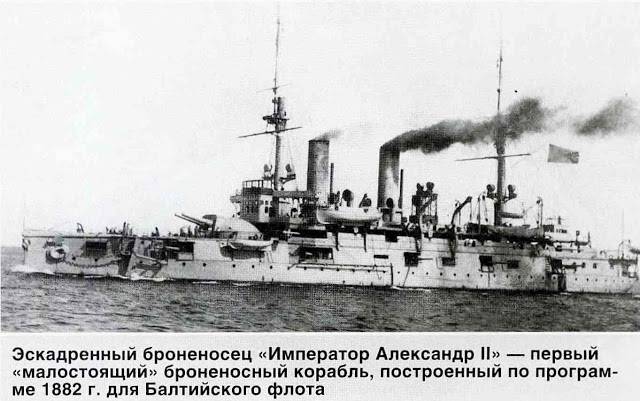
1 July, 1887, the ship was launched, after which the loading of cars and boilers began. In October, the assembly of the armored deck was completed, the installation of the battery and upper decks, the manufacture and installation of wooden side panels, cabin bulkheads and doors began. Decking with wood ended only in April 1888 of the year. The barbet installation ordered by the Metal Plant, seven onboard torpedo tubes (the two in the stern were subsequently abandoned), and the last 29 side plates were installed due to late delivery only by the end of 1889. Transferred to the completion of the construction in the port of Kronstadt in spring 1890, the battleship began to be prepared for tests, despite a lot of flaws. To a specially created acceptance commission chaired by Admiral K.P. Pilkin entered the junior flagship of the Baltic Fleet, Rear Admiral S.O. Makarov. The past 18 of September, the 1890 of the year, the tests of mechanisms showed good results, although both machines did not add up to the 211 HP. (with a displacement of 8748 t and power 8289 hp speed was 15,27 knots).
The tests of artillery fired at the end of September at maximum angles of descent did not reveal serious damage to the corps; The mechanisms of the barbet installation did not complain. Repeated tests also gave good results, also revealing the possibility of increasing the firing angles by changing the shape of the wings of the bridge. “In general, the ship makes a good impression in its improvement, and many details deserve great approval for the meticulousness of dressing and deliberation,” S. Makarov later wrote.
Despite the official completion of construction in 1891, the work continued on the battleship. So in the spring of 1892, a spherical armor cover was finally mounted for 305-mm guns, although an attempt to establish it was made a year ago. Similar, the original form of the roof a little later mounted on another domestic battleship "Twelve Apostles." All the works were actually completed only in the summer of 1893, when the spherical roof of the barbet installation acquired an approved MTK visor designed to protect the embrasure from precipitation. From that moment on, “Alexander II” gained its unique look.
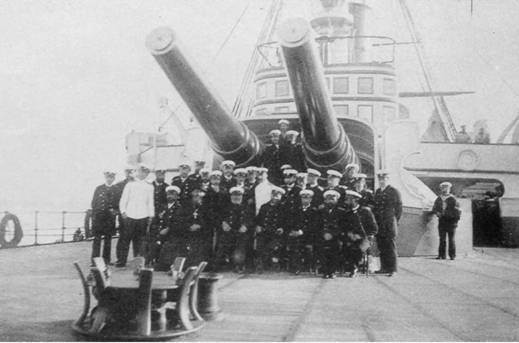
The 1894 campaign of the year for the battleship was part of the Practical Squadron. According to the naval headquarters, this detachment of combat-ready ships was to meet in the open sea enemy forces "penetrated the Baltic". It should be noted that the attitude to such plans was quite serious. All the squadron's occupations and voyages were devoted directly to combat training and a thorough study of the complex and shallow waters of the Baltic Sea. Ships constantly visited all areas where, according to the General Staff, there could be battles with the enemy. The voyages were full of intense exercises and practical shooting.
The beginning of 1895 of the year brought the news of a big celebration being prepared in Germany, which marked the completion of the long-term construction of the Kiel Canal, which was named Kaiser Wilhelm. This channel was of great strategic importance, as it connected the North and Baltic seas. Three Russian ships "Alexander I", the cruiser "Rurik" and the gunboat "The Dangerous", which received the sonorous name "Kiel Squadron", made the transition from Kronstadt to Kiel, where, together with the ships of the French and English squadron, took part in the celebrations. The 1895 campaign of the year was not marked by any other special events, which cannot be said of the 1896 campaign of the year that gave rise to the famous Mediterranean voyage.
3 August 1896, the squadron battleships Alexander II, Navarin, as well as the destroyers, having left the anchor, headed for the Swedish port of Khristianzand. So began the only long-distance sailing "Alexander II". Six days later, the detachment arrived at the Swedish port, after which it headed for English Portland. From there, the ships headed for the Mediterranean to the port of Cadiz. September 14 "Alexander II" hit the strongest storm. Wind reached 10 points, and excitement 7 points. The pitching was up to 30 ° aboard. In a minute, "Alexander II" made to 15 scale on board. But the ship and crew honorably withstood this test.
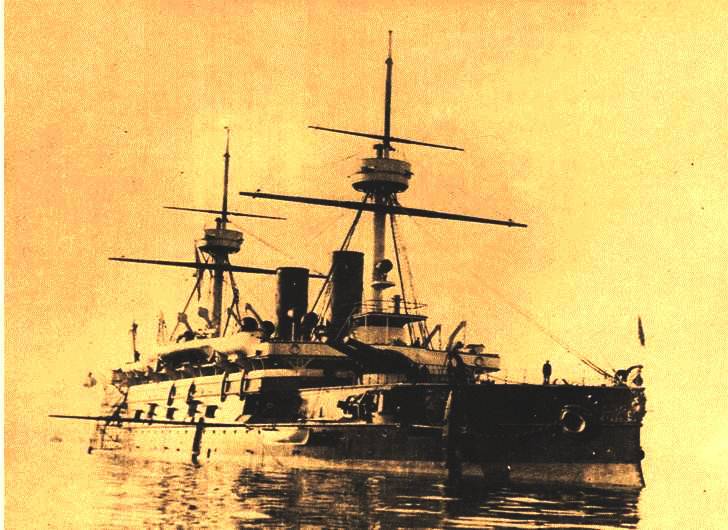
Until the very end of October, the detachment visited various Mediterranean ports and harbors. During the stay in the port of Poros, Grand Duke George Mikhailovich, who was the heir to the Greek throne, came on board the battleship. "Alexander II" delivered the prince to the Italian port of Trieste.
At the end of 1896, the Mediterranean detachment was reinforced. The battleships Nicholas I and Sisoy the Great were added to it, as well as the 2 cruiser of the Vestnik rank and the Posadnik mine cruiser. Strengthening the squadron was timely, as at the beginning of 1897, the conflict between the Greek and Turkish populations broke out on the island of Crete. It all started with a fight in the bazaar, which turned into riots, in which more than 60 people died. Given the strained relations between Greece and Turkey, the outbreak of war was not ruled out. Her probability became even more pronounced after the Greek cruiser Miaulis fired on Turkish transport.
The leading powers decided to block the island of Crete - which was the main source of tension. It was necessary to prevent the possibility of delivering regular troops to the island. Crete and Russian ships were blocked, which made it clear to friendly Greece that Russia adheres to and will not allow aggravation of relations with other powers. Naturally, the Greeks actively condemned such a policy of Russia. The conflict dragged on for the entire 1897 year, which delayed Russian ships in these places. However, 5 of April "Alexander II" came out of the bay and headed for Malta, where the battleship was planned to be put in the English dock for repairs.
During the inspection of the bottom, which was carried out in the dock, it turned out that the false hood was strongly eaten by a wood worm, which felt great in warm waters. The British workers began to correct it. Docking was delayed, so the battleship returned to the port of the Court only on June 24. Swimming in the Greek waters resumed. The rest of the 1897 of the year, "Alexander II" spent in the transitions between the Greek ports and exercises. During this period he was the flagship of the Mediterranean squadron.
At the beginning of 1898, it was urgently necessary to strengthen the squadron of the Pacific Ocean, where Sisoy the Great and Navarin had gone. In late March, he left the squadron and "Nikolai I", sent to Kronstadt for repairs. Of the battleships in the Mediterranean, only “Alexander II” remained.
During the long voyage in the car, the usual repairs were carried out. On the whole, the cars were in a completely satisfactory condition, and the 2 June 1898 disaster that occurred could be considered a random rather than a natural one. As a result of ignition of accumulated carbon gases, an explosion occurred in the left side corridor, near coal pits. Two firemen died, six more were injured. The cause of ignition was the fire of a candle, which was lit by firemen in a room adjacent to a coal pit.
But the voyage of the Alexander II continued. 19 November, the battleship again put in the dock. Now in the Italian port of Paul. December 24 "Alexander II" went out on the water and during the sea trials easily reached the speed in the 11,75 node. Mediterranean swimming "Alexander II" lasted until April 1901 year.
Early in the morning of September 7 1901, the inhabitants of Kronstadt found out in a dark silhouette, slowly entering the harbor of the ship, the squadron battleship "Emperor Alexander II". The ship immediately aroused interest in meeting the sailors of the public. Needless to say, the battleship passed almost 36 000 miles, which is almost one and a half times the length of the equator. In the fire chambers of the 12 ship boilers, 19500 tons of coal were burned, which is twice the weight of the battleship by weight. From the heavy service from the "Alexander II" to the shore, to the hospital, an 147 man was sent, this is almost a quarter of the ship's command. The 16 sailors did not return home. 12 of them died in a foreign land, and 4 remained abroad in search of a "better life."
In April, 1902 of the year, "Alexander II" joined the Artillery Training Detachment, and in the new campaign he was prepared for intensive swimming and shooting. The General Staff realized the acute shortage of commanders who should be urgently prepared in the campaigns of the next two years. By 1903, the once powerful battleship had practically become "powerless", it had to be re-equipped, repaired and upgraded, making it a full-fledged fleet unit.
In 1904, the "Alexander II" replaced weapons in accordance with the requirements for training and artillery ships. Of the previous systems, only two 305-mm guns remained. Four old 229-mm guns were replaced by five new 203-mm guns. The ship also received eight 152- and four 47-mm on battery and four 120-mm on the upper deck. Masts and yards were replaced with new, reduced and lighter ones. For night firing mounted spotlights system Mangene. Based on the experience of the Russo-Japanese War, onboard torpedo tubes were dismantled. During the sea trials, there were many defects in the boilers that flowed. They were coined, but this was enough for only one campaign. A major overhaul of the boilers was completed only in the winter of the year 1911, after which the battleship showed speed in the 12,7 node.
The next known page in the life of the battleship "Emperor Alexander II" was participation in the revolutionary movement. At the beginning of 1902, the first naval Social Democratic circle was organized on this ship, and from 1914, an underground group operated under the leadership of the artillery non-commissioned officer Bolshevik I. D. Sladkova. In the days of the February Revolution, the crew immediately joined the rebels of Kronstadt, and the ship committee took over the command of the ship. It was at his request that the 22 battleship of May 1917 received a resounding new name - “Dawn of Freedom”; 113 sailors from the battleship participated in Petrograd in July demonstration, which was shot by order of the Provisional Government. But this did not stop the sailors. On the instructions of the Kronstadt Committee, in September the crew began to prepare for an armed uprising. Under the leadership of the Bolshevik A.F. Linyaev aboard the 15 ship of October, a meeting was held which addressed the sailors of the Baltic Fleet with the following words: “We all say: hands off, all power to the Soviets of workers, soldiers and peasants' deputies. Remember, comrades, that time does not wait. Quite words, you need to act. "
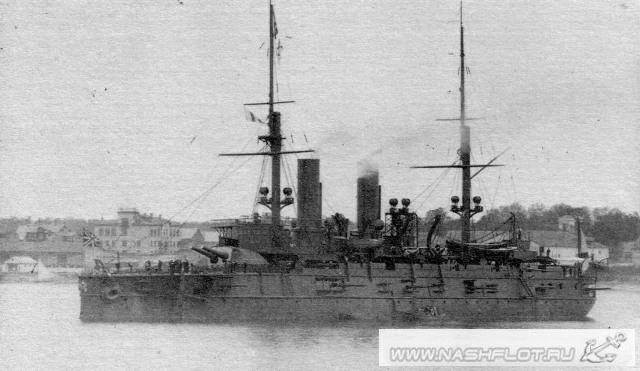
In the morning of October 25, the battleship took the position appointed at the headquarters of the uprising, at the entrance to the Kronstadt harbor to defend the Baltic Fleet base. 9 November 1917 “Dawn of Freedom” again arrived in Petrograd and anchored near the cruiser “Aurora”. This time the crew was charged with ensuring the revolutionary order in the capital and guarding Smolny; in the summer of 1918, the ship returned to Kronstadt. In January 1919, the battleship, along with other ships, took up a combat position at the entrance to the channel; he was faced with the task of not allowing the ships to pass without the permission of the military revolutionary committee, and in the event of the counter-revolutionary troops attacking Petrograd, to keep the whole Ligovsky district under fire. Later the ship was stored in the port; in 1922, they began to disassemble it. Thus ended the path of the squadron battleship of the Baltic Fleet, which did not participate in any battle, but at the same time managed to influence foreign and domestic political events.
Sources:
Arbuzov V. Battleship "Emperor Alexander II" // Battleships of the Russian fleet. 1997. No.4. C. 26-34, 81-107.
Pavlenko S. Russian battleships "Emperor Alexander II" and "Emperor Nicholas I" // Science and Technology. 2011. No.6 (61). C. 27-33.
Arbuzov V. Battleship “Dawn of Freedom” // Shipbuilding. 1987. No.7. C. 60-62.
Balakin S. Weapon against their own ("Emperor Alexander II") // Model-designer. 1994. No.3. C. 34-37.
Melnikov R.M. Battleship "Emperor Nicholas I" // Gangut. No.8. C. 21-23.
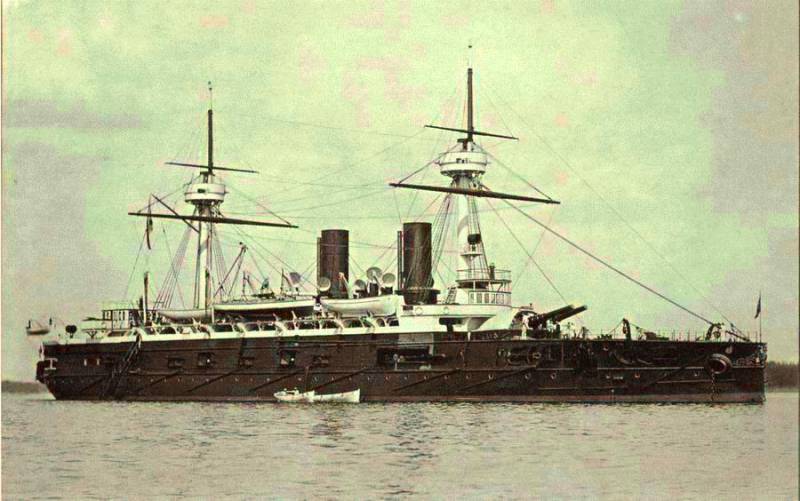
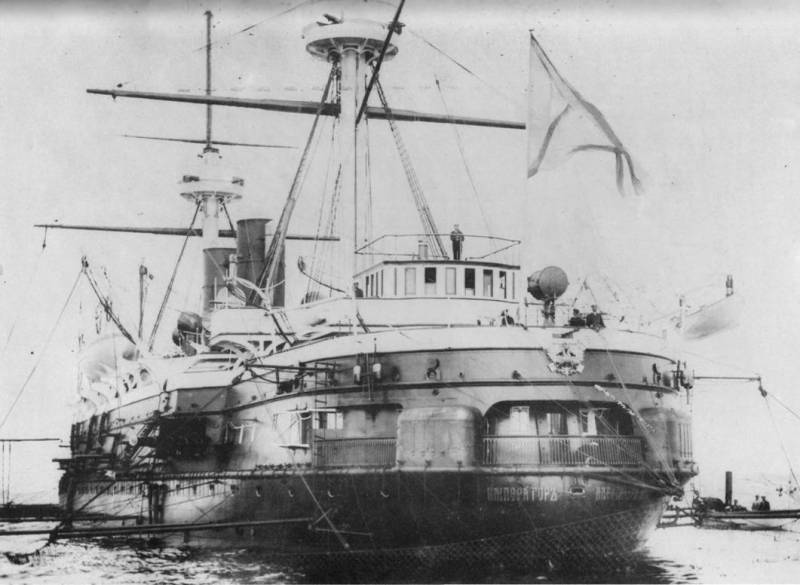
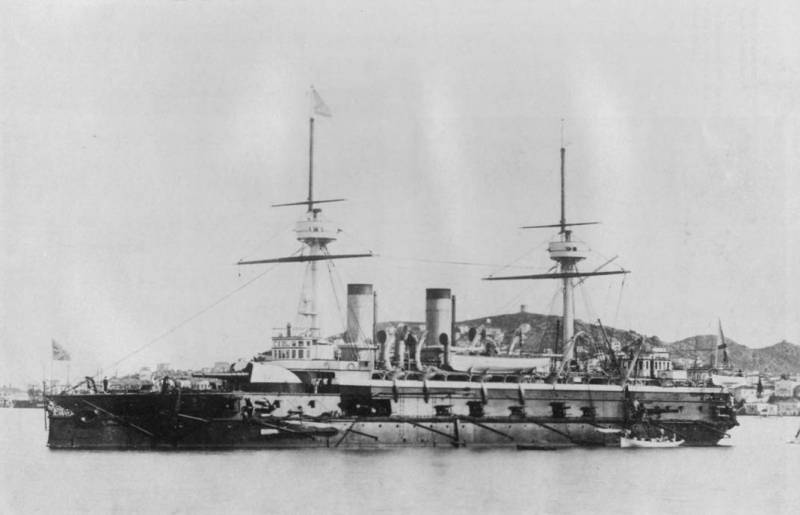
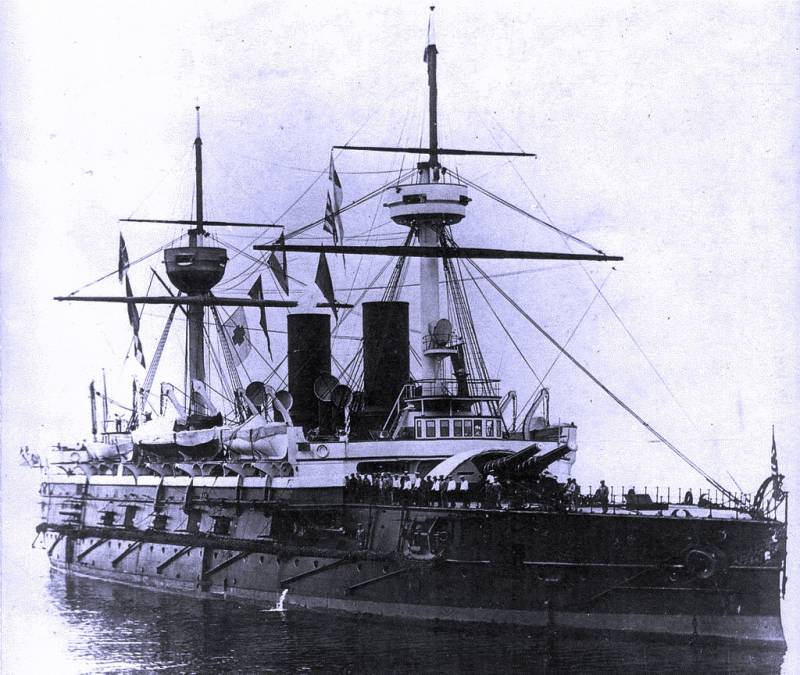
Information